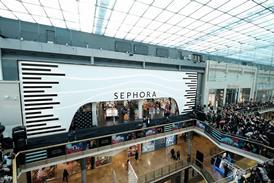Fashion giants Inditex and H&M reported solid results last week, but as the global downturn continues to deepen both retailers need to remain at the top of their game. While both are formidable players, some argue that H&M faces more challenges than its rival Inditex.
The Spanish giant – owner of Zara – has caused concern among some analysts as the economy in its domestic market has suffered a severe slump. However, it showed growth in all of its 73 worldwide markets in its full-year results. It reported flat like-for-likes but total sales growth of 12 per cent in local currencies.
Bernstein senior analyst Luca Solca said concerns over Spain, and southern Europe in general, are unfounded. “The concerns seem to overlook that in those markets lots of people shop in independent, higher-end shops. Inditex is in the sweet spot to get those who are trading down,” he said.
He added that the fact Inditex is dominant in southern Europe will stand it in good stead, as the retailer competes more with independent stores than multiples. In southern Europe, independents have about 40 to
50 per cent market share, compared with about 10 per cent in northern Europe.
“Zara is not unique in terms of price but in its capability to be quick to market,” he argued.
Zara is not unique in terms of price but in its capability to be quick to market
Luca Solca, Bernstein
Swedish giant H&M could face more of an uphill battle. While the retailer remains strong – reporting comparable sales down 5 per cent in its first quarter, with total sales up 18 per cent to SEK23.3bn (£1.97bn) – it is pitting itself mainly against other multiples.
“H&M has stronger competitors in its northern Europe markets,” Solca said. He also points out that H&M has a slightly lower price point than Inditex so sets itself more against competitors such as Primark in the UK. He added: “Discounters are trying to be fashion-forward. If they develop more in continental Europe this could prove a threat.”
Both Inditex and H&M could maintain growth with the continuing launch of distinct fascias, offering different products and price points.
Solca insisted that “hiding” from weakening markets is not a suitable strategy for either of the fashion giants to follow this year. He said: “You need a strong business model that will allow you to decline less [than a weaker player].
“Being exposed to weaker competition will also be a plus.”

























1 Reader's comment